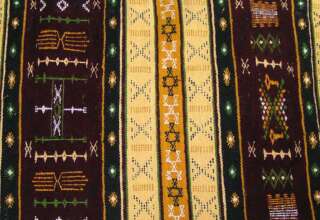
Only after a few initial sessions the children began to bring to therapy their inner world, their experiences, their difficulties in the new format of life, the conflicts created in the intense relationship with parents and siblings, lack of leisure frameworks and distance with extended family members and fantasies related to what the virus caused. As part of a return to normalcy, the therapeutic setting has become an intermediate space, (Winnicott, 1971), a bridge between the inside and the outside, between reality and fantasy, between there and then – versus here and now.
Unfortunately, the second wave of the epidemic is approaching us and threatening again. In AAT an important goal related to the near future is to help our patient maintain and adhere to a routine of normalcy as much as possible. Some children are already mature for developing a kind of integration in the current circumstances of their lives, while for other children the dissociation is the protective mechanism they need to maintain themselves. The professionalism of the therapists and the zoological space will be once again, powerful tools to help everyone with their needs and abilities. The time will come for understanding and insight into what is happening to us in the current period…
_________
References
- Berger, R., (2006) Incorporating Nature into Therapy: A Framework for Practice, Journal of Systemic Therapies: Vol. 25, June, pp. 80-
- Graham, K. et Burghardt, G., (2010) Current Perspectives on the Biological Study of Play: Signs of Progress, The Quarterly Review of Biology, December 2010, Vol. 85, No. 4 The University of Chicago .pp. 393-418.
- Levinson, B. M. (1969). Pet oriented child psychotherapy. Springfield, IL: Charles C. Thomas.
- Luzzi, A., & Bardi, D., (2009) Psychoanalytical Conceptual Approach to Children’s Play. Initial Step for an Empirical research in Psychotherapy Anu. Inv. ,Vol. 16. Bs. As. Argentina.
- Marino, L., (2012) Construct Validity of Animal Assisted Therapy and Activities: How Important is the Animal in AAT? Antrozoos 25 (1), pp. 139-151.
- Melson, G. F. (2001). Why the wild things are: Animals in the lives of children. Cambridge, MA: Harvard University Press.
- Melson, G. F. & Fine, A. H. (2006) Animals in the lives of children. In A. H. Fine (ed.) Animal Assisted Therapy: Theoretical Foundations and Guidelines for Practice, 2nd. ed. (pp. 207-226). San Diego: Academic Press.
- National Association of Scholl Psychologists (2020) https://www.nasponline.org/resources-and-publications/resources-and-podcasts/school-climate-safety-and-crisis/health-crisis-resources/helping-children-cope-with-changes-resulting-from-covid-19
- Parish-Plass, N., (2013) Animal-Assisted Psychotherapy: Theory, Issues, and Practice -New Directions in the Human-Animal Bond, Purdue University Press, Chap. Conclusion pp. 431-438
- Pellegrini, A. D.,(2009) The Role of Play in Human Development, Oxford University Press.
- Urquiza-Haas, E. G., & Kotrschal, K. (2015). The mind behind anthropomorphic thinking: attribution of mental states to other species. Animal Behaviour, 109, 167-176.
- VanFleet, R., & FanThompson, T. (2010) The Case for Using Animal Assisted Play Therapy, British Journal of Play Therapy, Vol. 6 pp. 4-18.
- Vasen, J., (2004) Contacto Animal, Un Lazo Fuera de Serie, Letra Viva, Bs.As., Argentina.
- Wilson, E. O. (1984). Biophilia – The Human Bond with other Species. Harvard University Press.
- Winnicott, D.W. (1971). Playing and Reality. Basic Books, New York.
____________________






